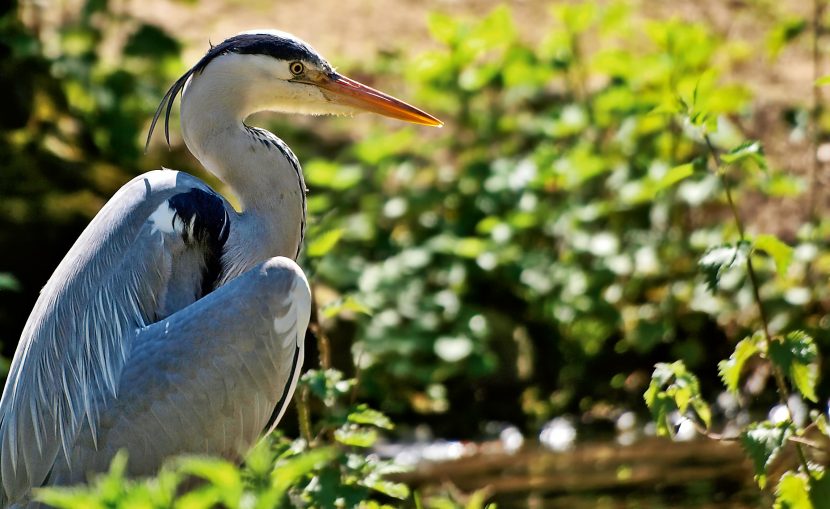Washington Wetland Centre has been named the 15th most important place in the UK for populations of grey heron, by a Wetland Bird Survey (WeBS) data report from the British Trust for Ornithology (BTO). It is the only site from the North East to make the Top 20.
Grey herons are a key annual wildlife spectacle for many visitors to the 42-hectare reserve, with the drama of their nest-building, chick-rearing, fledging and hunting taking place in easy view from the hides at Wader Lake.
The unmistakable, long-legged wading birds typically spend their winters scattered in wetland areas around the region, returning each February to breed colonially, high in the trees bordering the lake, in what’s known as a ‘heronry’.
As well as this key nesting habitat, the lake’s shallow waters also provide the ideal conditions in which the birds can hunt. Feeding mostly on aquatic creatures, they famously stalk their prey and stand incredibly still for long periods before striking with their long, sharply pointed beaks.
Kate Ferguson, WWT Washington’s reserve warden, is part of the team looking after Wader Lake and monitors the incredible number of bird species thriving there across the seasons.
She said she was thrilled that the colony – which she spends many hours observing – had been recognised in this way.
“Part of my role as reserve warden is to monitor and observe the many wild species which visit our site, including the majestic grey herons”, she said.
“They’re such characterful birds and last year’s breeding season was a very dramatic one, hampered by bird of prey activity and two fierce storms, but the resilient herons still managed to reach a peak of 30 nesting pairs and successfully raised a total of 55 chicks.
“We currently have around 8 adult grey herons down on Wader Lake and as we move into February, the breeding season will start to really kick off, with several more herons joining them, hunched up along the edge of Wader Lake meadow.
“This standing will continue and the queue of herons will grow until numbers at their ‘standing ground’ are enough that breeding conditions are synchronised across the group, at which point they take the trees.
“As you can imagine, a hedge full of vocal, nesting grey herons soon gets very noisy and busy and they provide a brilliant up-close wildlife spectacle for our visitors.
“We can’t wait to see what excitement and wonderful nature moments they have in store for us this season and we’re thrilled that they’ve been ranked so highly on the BTO list.”
To read more from Kate about the grey heron’s 2022 season, her blog ‘Tales from the Heron Hedge’ is on the WWT Website now.
If you’ve been inspired to visit Wader Lake and watch the magnificent grey herons return this February, find out more and plan your visit online.
The data report also highlighted several other key bird species at Washington Wetland Centre, where populations have ranked well in the UK, including common tern (9th), avocet (37th) and red-listed curlew (47th).

